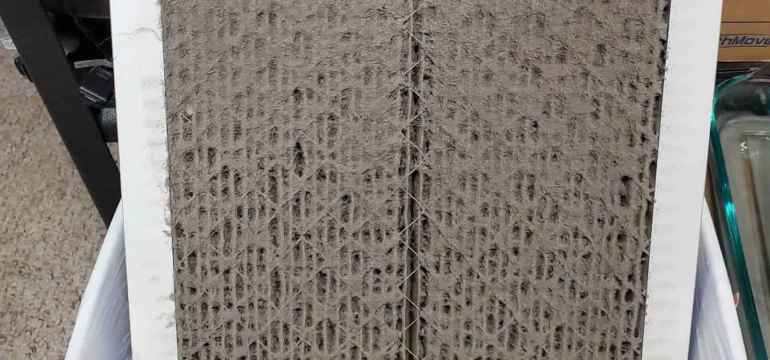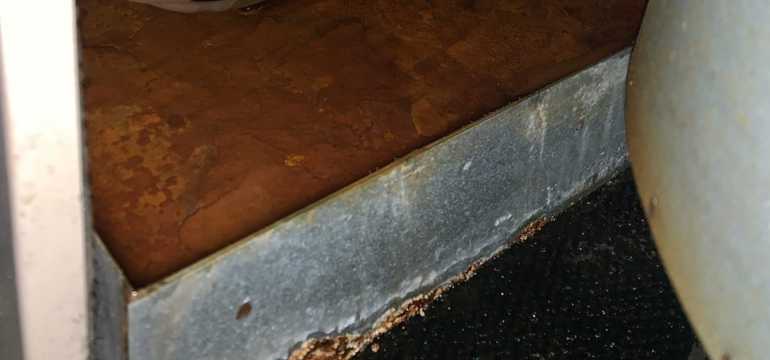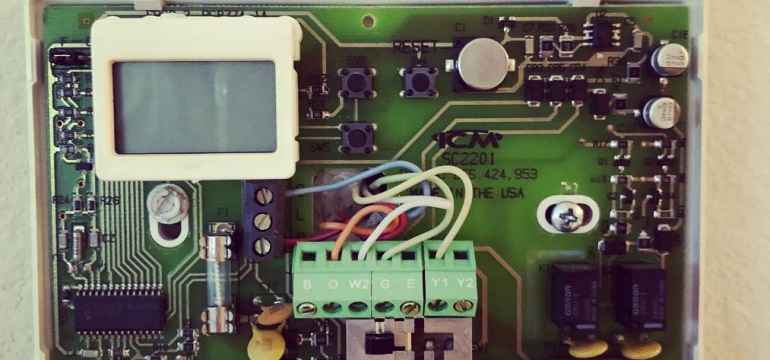Older furnaces used to have standing pilot lights. These would always be on, so you never had to worry about the furnace not igniting your burners.
But standing pilot lights are both unreliable and waste a lot of energy. So they’ve been mostly replaced with electronic ignition systems. But these can sometimes fail. And you may have an issue where all of your burners are not igniting.
This happens because no natural gas is getting to the burner, or the safety features aren’t allowing it to ignite. You may also be having some problems with a flame sensor, thermocouple, or something else entirely.
We’ll dive into all of the potential causes of your furnace not igniting your burners and the solutions for those problems below. So keep reading to learn more.
If your furnace is not igniting the burners, look at easy fixes first
When you’re dealing with something like this, you always want to begin with the problems that are easiest to fix first. That way, you don’t end up wasting your time on complex, technical issues that lead nowhere.
With that in mind, here’s what you want to look at first if all burners are not igniting.
Is the furnace off?
Maybe this is the first time this season that you’ve tried turning your furnace on. If so, you could’ve forgotten to turn the furnace switch back on. You can usually find this somewhere in close proximity to the furnace itself.
Is your pilot light out?
This is worth checking if you have an older furnace that always keeps the pilot light on. Because if you do and the pilot light has gone out, the fix is really easy. You would just need to relight the pilot light and that should do the trick.
But note this solution will only work if you have a standing pilot light.
Do you have a circuit breaker that’s tripped?
Although natural gas is likely the main source of fuel for your furnace, it still needs some electrical power to ignite the burners. So it’s possible that’s where your problem lies.
The solution is to look at your electrical panel and see if there are any tripped breakers. If there are, reset them, wait for a second, and then try using your furnace again.
If the circuit trips again after you turn the furnace on, turn it off and call an HVAC professional. You may have a more complicated electrical issue going on.
Is your gas supply fine?
It’s also possible that your furnace isn’t able to get the gas intake that it needs to turn on and run. That could be because your home’s gas supply line isn’t functioning properly.
You can check this by turning on your oven and seeing if that works. If it doesn’t, then this is likely going to be the source of your furnace problem.
Look at the flame sensor

The next thing we can try is looking at your flame sensor. This is what tells your furnace when to light and extinguish the pilot light.
As you can imagine, when it’s not working properly, it may tell your system to keep the pilot light off even when it should be on. It can also lead to your furnace being on for way too long, which causes overheating and premature part decay.
The solution to this problem is to clean the flame sensor. Here’s how to do it:
- Start by turning off the power supply.
- Remove any screws and housing that holds the igniter sensor in place.
- Remove the sensor and rub it with a fine sandpaper.
- Use a clean towel or paper towel to wipe away the grime.
- Replace the sensor and try your furnace again.
You may have a gas line issue
It’s also possible that the gas line, which is specific to your furnace rather than your home is the source of your problem. This can happen when the line is blocked or too small for your needs.
You may even have a gas line that’s too large for your furnace. This can cause too much gas to flow through your furnace. When that happens, there can be damage to various internal parts that can reduce the lifespan of your system.
There’s not a good at-home solution for any of these issues. The only real option is to get an HVAC technician out to take a look. They can clear out any serious obstructions and let you know if you need to upgrade your line to fix the problem.
One thing to consider is whether you’ve recently had a storm or heavy winds in your area. Because sometimes your gas line issues aren’t even related to your home’s setup but to major supply lines in the neighborhood.
If something like a tree branch fell on one of these supply lines, then that might be what’s causing the issues in your home.
Your filter may be clogged

Many furnaces have a built-in safety feature that won’t let them ignite if the system has a clogged air filter. That’s because the reduced airflow from this issue can be a safety hazard.
That’s one of the reasons why experts recommend that you change out your filters with some regularity. If you haven’t done this in a while, then take a look at your filter to see how it’s looking.
If the filter is very dirty, then it’s time for a replacement. Try doing that and restarting the system. If your furnace is still not igniting the burners, it’s time to try another solution.
Your pilot light or igniter may be responsible
You may also have a faulty or completely broken pilot light or igniter. When this happens, you need to replace or repair the parts in order to get your furnace back up and running.
To figure out which of these is causing your issue, listen to the sound that your system makes. Do you hear a clicking noise? If so, you’ve likely got an electronic ignition system failure.
Or, maybe your furnace ignites all of the burners normally. But then they go out after a few minutes. In that case, it’s usually a pilot light problem.
Your gas burners could be dirty
Next on our list is checking to see if your gas burners are dirty. This can happen naturally as your HVAC system accumulates dirt and dust over time.
When this happens, the flames your system produces won’t burn as well. This can damage your system and reduce its effectiveness.
The way to clean these is to blow compressed air through them. Then, take a brush or a rag and wipe them down.
Look at your drain pan

One major piece of information to keep in mind is that the igniter itself won’t always be the reason why your burners don’t ignite. Furnaces are complex machines that have a lot of moving parts. If one of these moving parts isn’t working properly, it can impact various other components.
That’s why you should look to see if your drain pan is draining properly. This is what collects and removes any condensation that your system creates. But if the drain pan isn’t removing the water it collects, the furnace won’t run due to safety issues.
You may just need to clean out your pump to fix the problem. But if that doesn’t work, it could be time to replace the pump entirely.
Your thermostat may have lost connection

Another big potential cause of your problem is your thermostat. There are various problems you can run into with a thermostat that will negatively impact your furnace’s functionality.
Your thermostat is what tells your furnace when to turn off and on. So if it isn’t reading the right temperatures in your home, your furnace may be getting faulty information. And that could be the source of your issues.
With that in mind, here are four things to look at to figure out whether this is your problem.
Is it too close to any sources of heat?
When your thermostat is too close to a source of heat, it can read the temperature in your home as being hotter than it actually is. This tends to create a home that’s constantly colder than you want it to be.
The solution is to either move the thermostat or eliminate the source of heat. For example, if you’ve got a big window that lets in a lot of sun, try closing the blinds one day to see if that fixes your problem.
Is it in a central location?
Experts will tell you to place your thermostat in a central location within your home. There’s a good reason for this. If you put the thermostat on one side of the house or another, it may not give you an accurate reading of the overall temperature in your home.
Is it dirty?
It’s also worth checking to see if your thermostat is dirty. When this happens, it can impact temperature readings by reducing the connection between the thermostat’s important sensors.
Is it old or broken?
Finally, you may want to consider whether it’s time to upgrade to a new furnace. If you’ve had the same one for years, its internal components may simply no longer work as well as they once did.
There could be a strong draft in your home
Another question to consider is if there’s a strong draft in your home somewhere near your furnace. When this happens, it can blow out the pilot light. The same can occur when your furnace has a blower or draft motor that’s malfunctioning or broken.
Your draft motor is what pushes and pulls air into and out of your chimney or vent. It can sometimes break in old age and may need replacing.
Another thing to keep in mind is that a blocked vent or furnace vent can lead to the system not getting enough air to function. When this happens, the igniter usually won’t even turn on.
You can look out for this issue by listening to see if you hear a faint hum when your furnace is on. If you do, that means your draft motor is working properly. But if there’s some type of blockage in your furnace, the hum may sound more muffled, and you may notice fumes.
Your ignitor may be too old
Many people don’t realize this, but your ignitor isn’t actually supposed to last for the entire lifespan of your furnace. Most manufacturers haven’t figured out how to create an igniter that can be as durable as the furnace itself.
That means you’re going to need to replace your ignitor at some point, assuming you want to use a furnace for as long as you possibly can.
If you think that this may be the source of your problem, then it’s time to call out an HVAC technician. They can both let you know whether this is your issue and help you figure out the best replacement ignitor for your furnace.
Note, it’s really important to make sure you get the right-sized igniter. Otherwise, your system will probably fail again in the near future. So don’t try to pick this out on your own unless you really know what you’re doing.
Your electrical setup may be faulty
It’s also possible that your home’s electrical setup may be the reason why your furnace is not igniting its burners.
Your furnace operates best when it receives the correct amount of electricity. But if it starts receiving too much electricity, then it may automatically burn out for either safety reasons or mechanical ones. This can often happen in a power surge.
Issues could also arise if your furnace isn’t getting enough electricity. Either way, the solution is to call out an expert who can measure the electrical current in your home. You may need an electrician for this rather than an HVAC professional.
- What to Do if Your House Smells Like Gas but There’s No Leak - February 6, 2023
- Why Is There a Burning Smell Coming From My Vents? - August 16, 2022
- How to Remove the Musty Smell From Your Air Conditioner - August 16, 2022
